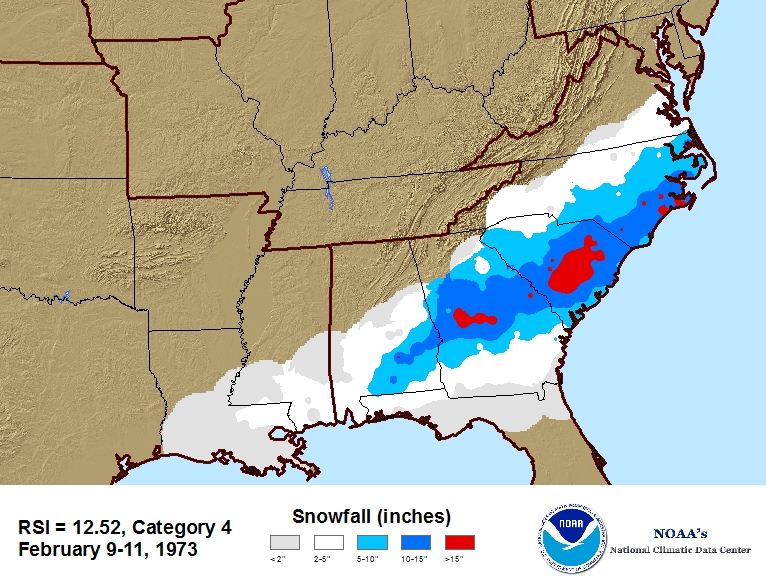Regional Snowfall Index (RSI)
Access & Use Information
Downloads & Resources
-
NCEI Dataset Landing Page
Landing page for the dataset.
-
NCEI Climate Data Online Map Server
Dynamic GIS mapping application to locate stations and data for selected layers.
-
NCEI ArcGIS REST Services DirectoryEsri REST
ArcGIS Server REST API for the dataset.
-
Direct Download for Surface Snow Products
Download the Regional Snowfall Index and other related products.
-
The Regional Snowfall Index (RSI) web page.
Background, description, RSI maps and data values.
-
Global Change Master Directory (GCMD) Keywords
The information provided on this page seeks to define how the GCMD Keywords...
-
Global Change Master Directory (GCMD) Keywords
The information provided on this page seeks to define how the GCMD Keywords...
-
Global Change Master Directory (GCMD) Keywords
The information provided on this page seeks to define how the GCMD Keywords...
-
Global Change Master Directory (GCMD) Keywords
The information provided on this page seeks to define how the GCMD Keywords...
-
Regional Snowfall Impact ScalePDF
PDF file of science paper
-
The Regional Snowfall Index (Published paper)
Abstract and links to the journal article describing the data.
-
Northeast Snowfall Impact Scale
A precursor to the Regional Snowfall Index.
Dates
| Metadata Date | June 23, 2023 |
|---|---|
| Metadata Created Date | October 28, 2022 |
| Metadata Updated Date | September 19, 2023 |
| Reference Date(s) | January 1, 2011 (publication), June 1, 2014 (revision) |
| Frequency Of Update | asNeeded |
Metadata Source
- ISO-19139 ISO-19139 Metadata
Harvested from ncdc
Graphic Preview

Additional Metadata
| Resource Type | Dataset |
|---|---|
| Metadata Date | June 23, 2023 |
| Metadata Created Date | October 28, 2022 |
| Metadata Updated Date | September 19, 2023 |
| Reference Date(s) | January 1, 2011 (publication), June 1, 2014 (revision) |
| Responsible Party | DOC/NOAA/NESDIS/NCEI > National Centers for Environmental Information, NESDIS, NOAA, U.S. Department of Commerce (Point of Contact) |
| Contact Email | |
| Guid | gov.noaa.ncdc:C00465 |
| Category Tag 16E15F51 D96E 4051 9124 75665Abdc6Ff | ["Transportation","Physical Data"] |
| Access Constraints | Cite as: Squires, Michael F.; Lawrimore, Jay H. (2011): Regional Snowfall Index [indicate subset used]. NOAA National Centers for Environmental Information. https://doi.org/10.25921/r2cd-th81 [indicate access date], Distribution liability: NOAA and NCEI make no warranty, expressed or implied, regarding these data, nor does the fact of distribution constitute such a warranty. NOAA and NCEI cannot assume liability for any damages caused by any errors or omissions in these data. If appropriate, NCEI can only certify that the data it distributes are an authentic copy of the records that were accepted for inclusion in the NCEI archives., Use liability: NOAA and NCEI cannot provide any warranty as to the accuracy, reliability, or completeness of furnished data. Users assume responsibility to determine the usability of these data. The user is responsible for the results of any application of this data for other than its intended purpose. |
| Bbox East Long | -65.0 |
| Bbox North Lat | 50.0 |
| Bbox South Lat | 30.0 |
| Bbox West Long | -100.0 |
| Coupled Resource | |
| Frequency Of Update | asNeeded |
| Graphic Preview Description | RSI map example for snowstorm events. |
| Graphic Preview File | https://www.ncei.noaa.gov/pub/data/metadata/images/C00465_RSI-image.jpg |
| Graphic Preview Type | PNG |
| Harvest Object Id | eb32de0e-b0a8-4a56-a7c5-17f4da66c7ea |
| Harvest Source Id | 2cb3ef77-1683-4c2a-9119-dc65e50917c6 |
| Harvest Source Title | ncdc |
| Licence | |
| Lineage | RSI values are a function of the area affected by the snowstorm, the amount of snow, and the number of people living in the path of the storm. For a full description of how the Index was calculated, please view the documentation. |
| Metadata Language | eng; USA |
| Metadata Type | geospatial |
| Old Spatial | {"type": "Polygon", "coordinates": [[[-100.0, 30.0], [-65.0, 30.0], [-65.0, 50.0], [-100.0, 50.0], [-100.0, 30.0]]]} |
| Progress | onGoing |
| Spatial Data Service Type | |
| Spatial Reference System | |
| Spatial Harvester | True |
| Temporal Extent Begin | 1900-01-01 |
Didn't find what you're looking for? Suggest a dataset here.

